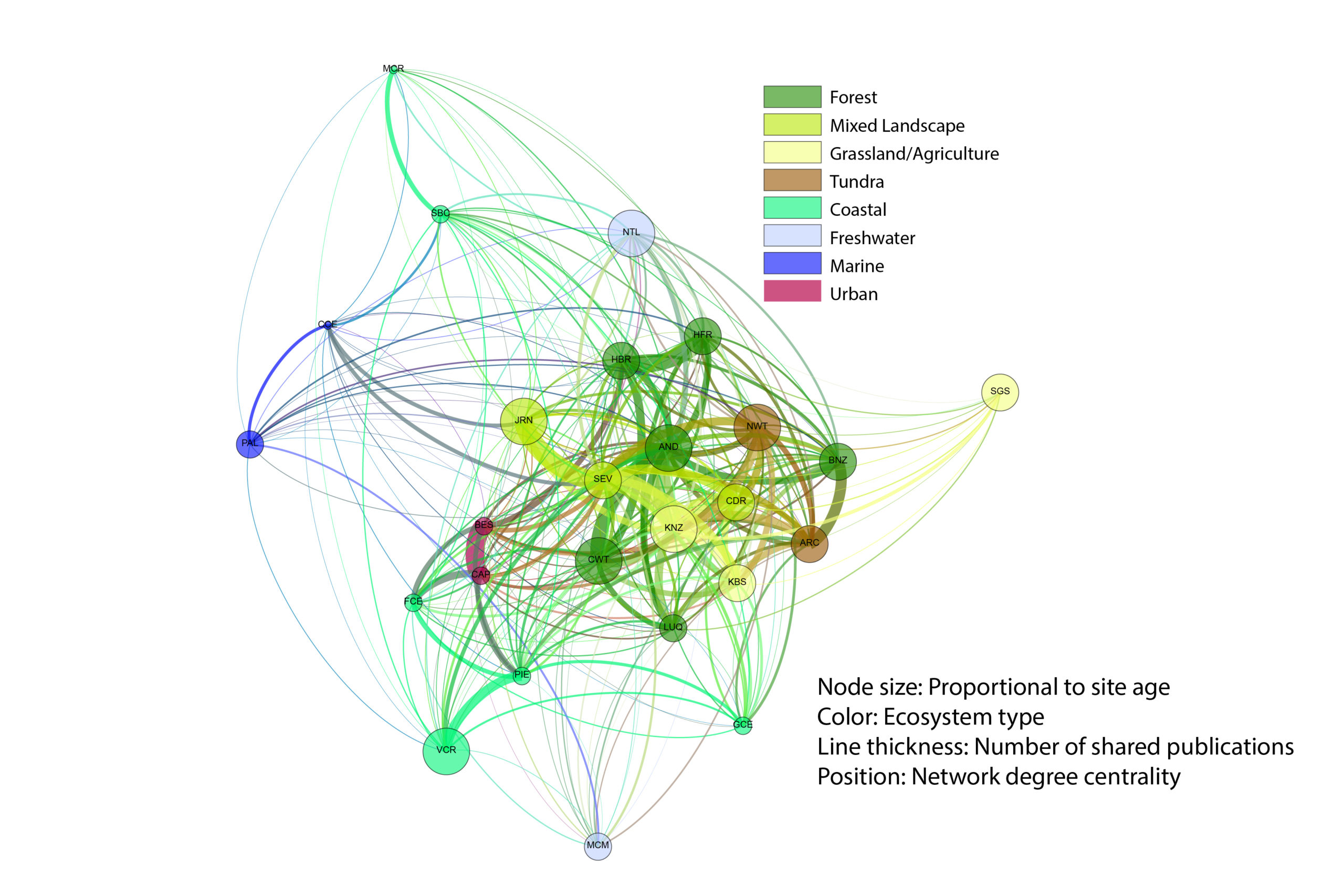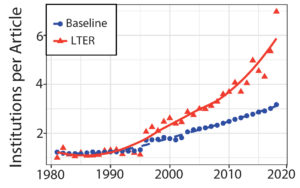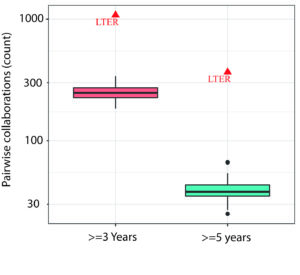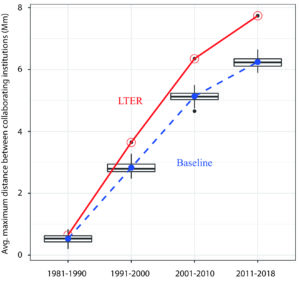
A network analysis of cross-site collaboration shows influence of ecosystem type and a cohort funding effect. Analysis is based on shared authorship from multiple sites among LTER papers published in the years 1980-2018 and visualized in Gephi.
Credit: LTER Network Office
After 40 years, 28 sites, nearly 7000 datasets and over 15 thousand papers, is it possible to say what the special sauce is that makes LTER a network? A recent analysis of collaboration in the LTER Network reveals that LTER-related publications involve more collaborators, more institutions, persist for longer, and cover greater distances than other publications in the field of ecology.
The analysis, which was a collaboration between researchers at Fudan University and the LTER Network Office, relied on a recent update of the LTER bibliography ahead of the Network’s 40th anniversary. The team assembled two bibliometric databases. The Ecological Bibliometric Database (EBD) included all the research papers in the 17 journals classified as “ecology” journals by Elsevier’s Scopus database and served as the baseline for comparison. The LTER Bibliometric Database (LDB) included all the research papers identified by LTER sites as being LTER papers. The treatment condition comprised the intersection of the two, which they dubbed the LTER Ecological Bibliometric Database (LEDB).
In the first years of the LTER Network (1980-1990) collaboration was similar in the LTER Network and the field broadly. Collaboration everywhere increased steadily through the next three decades, but at a much faster rate for LTER-related papers. This outcome—LTERs as a magnet for collaboration—was expected and hoped for from the start of the network, but has never been so clearly demonstrated.
The authors also compared the duration of institutional collaborations in the baseline and LTER groups by counting the years in which two institutions shared authorships on papers. Collaborations lasting 3 or more years were 3 times as common in the LTER group as in the baseline group and those lasting 5 or more years were nearly 10 times as common as in the baseline group.
For distance, they compared the locations of the two most distant home institutions of authors on each paper. Long distance collaborations have been growing in frequency over the past 4 decades—due, presumably, to the internet and the growth of open data—but LTER collaborations lead the rest of the field by about a thousand kilometers in each of the last decades.
The updated database also allows researchers to ask questions about which LTER sites collaborate most frequently with each other and what factors might lead to greater collaboration. A site funding cohort effect is apparent, that is: sites in similar ecosystems collaborate frequently, but the effect is even greater when they were funded at about the same time. Papers related to information management projects are co-authored by researchers at multiple sites, which suggests such projects enhance collaboration in two ways—through the projects themselves and by making LTER data more accessible and reusable.
Other potential drivers of collaboration, such as all scientists’ meetings, synthesis working groups, and cross-site career mobility, are more difficult to tease out from the general trend toward increasing collaboration. In a recent DataONE webinar, author Marty Downs discussed both the published network-level analysis and ongoing analyses of cross-site collaboration.
— by Marty Downs
Source: Huang, Tian-Yuan, MR Downs, J Ma, B Zhao, Collaboration across Time and Space in the LTER Network, BioScience, https://doi.org/10.1093/biosci/biaa014














